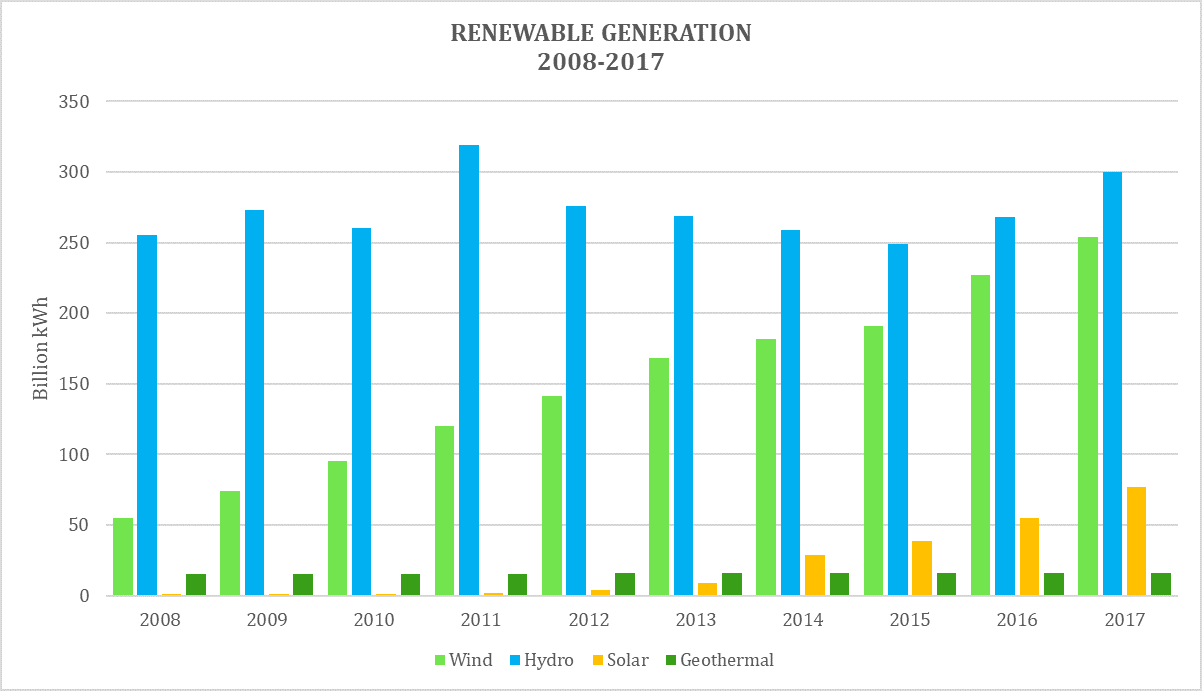Renewable Energy
What Is Renewable Energy?
“Renewable energy” is a phrase we hear a lot. But what exactly does it mean for an energy source to be “renewable”?
Let’s think about how different energy sources replenish or replace themselves. Fossil fuels such as coal, oil, and gas, take millions of years to form. They come from the fossilized remains of ancient plants and marine life deep in the Earth's crust. Thus, fossil fuels will not replenish themselves again for millions of years. This is not a useful timescale for human use, thus we consider fossil fuels to be "non-renewable."
In contrast, renewable forms of energy constantly replenish themselves. Renewable sources harness energy from things like the sun, wind, and moving water. Other renewable sources include geothermal power or energy harnessed from within the Earth. And tidal power, energy harnessed from ocean tides. These sources all have something in common: they are almost always accessible. They can't be used up like fossil fuels. We can rely on the fact that some combination of these forces will always be available no matter how much we use them. This makes them “renewable.”
Image: Climable, 2024
Another important characteristic of renewable sources is that they don't emit greenhouse gases (GHGs). Fossil fuels pollute our air, ground, and water, and emit GHGs into the atmosphere. Their emissions make them the main source of climate change. Thus, renewable energy is a critical solution to fight climate change. This is also why it’s also often called “clean energy” or “green energy.”
There are multiple sources of renewable energy and their share in the generation mix has changed over the years. Hydroelectric remains the largest producer in 2017 with 44% of the total renewable generation, though wind power has seen the most significant increase, accounting for 37% in 2017. These are followed by solar with 11% and geothermal with 2%.
Graph: Climable | Data source: Energy Information Administration



